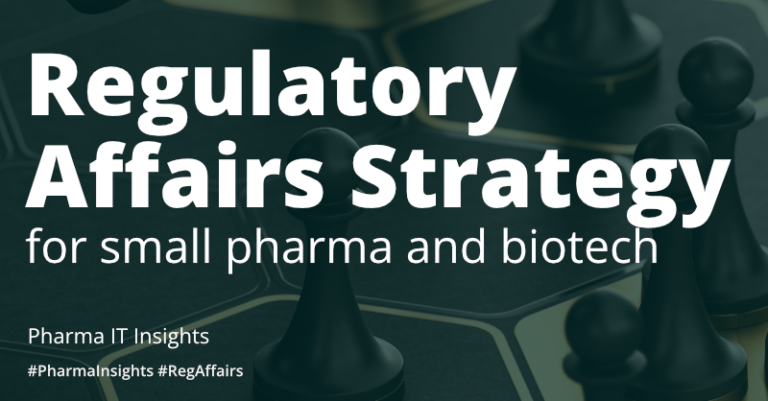
Share on email
Share on linkedin
Share on twitter
Share on skype
Share on facebook
By Maria Homann and Mathias Nikolaj Reidl
April 8, 2021
By Maria Homann and Mathias Nikolaj Reidl
April 8, 2021
What you will learn:
● What is RPA?
● What is the difference between test automation and RPA?
● How RPA can generate value in the Pharmaceutical and Biotech industries
● RPA use-cases
Gartner defines RPA as “. . . a productivity tool that allows a user to configure one or more scripts to activate specific keystrokes in an automated fashion. The result is that the bots can be used to mimic or emulate selected tasks within an overall business or IT process.”
In other words, RPA software allows you to automate tasks through specialized software (often called “robots” or “bots”) in order to gain productivity. To this end, there are many different types of software available, ranging from fully scripted solutions that require extensive programming skills to completely codeless tools, such as Leapwork, that are simpler to use for non-technical personnel.
By using RPA tools, employees can automate time-consuming tasks that, although they are often central to business processes, return little value when time expenditures are taken into account. For example, a HR manager might want to automate the process of updating employee information across platforms, and a finance manager might want to automate the process of sending out invoices. Often, robots are better at performing these tasks because robots are inherently more accurate and do not get bored by repetitive work. Furthermore, such automation enables the creation of more complex processes and cases – more on that later.
If you are familiar with test automation, you may be wondering what the difference between test automation and RPA is. Adding to this, it is not uncommon for many automation vendors to offer both solutions within one platform, which can add to the confusion. You may also be interested in acquiring more in-depth knowledge on the topic if your IT department is already leveraging test automation, and you want to see if a similar solution can be utilized across departments.
Truth be told, test automation and RPA share many similarities and can create some of the same benefits. They are both essential tools for enterprises undergoing digital transformation, and who have a high need for agility and change-readiness. As Senior Consultant at Pharma IT Jeppe Resen Amossen said in a recent interview: “. . . automated testing becomes the only feasible way to stay assured that existing functionality still works in settings where the system becomes sufficiently complex or when changes need to be implemented on a continuous basis.”
The difference here is that RPA is about completing processes rather than testing them – if tedious, repetitive processes are left to be performed manually, it requires a much larger amount of resources and leaves no room for innovation, in turn exposing the business to unnecessary risks when changes in the market occur.
Below is an overview that sums up the remaining differences between test automation and RPA.
Test Automation | RPA | |
Ownership | Owned by the IT department | Owned by any department |
Purpose | Checking processes | Completing processes |
Scope | Usually applied to a single application | Usually applied to multiple applications |
Domain knowledge | Requires domain knowledge | Requires process knowledge |
Data source | Test data | Real data |
Environment | Testing environment | Production environment |
What is automated | Test cases | Processes |
RPA is, like Gartner describes in the earlier quotation, first and foremost a productivity tool. RPA can help you eliminate highly repetitive tasks in order to gain efficiency. If you have people on your team who are highly educated and well-paid, but who spend many hours on performing simple, repetitive tasks, you have good reason to look into RPA.
In addition to productivity increases, RPA can also help reduce risk. This is because robots don’t get tired or bored when performing repetitive work – and they never deviate from their assigned path. This means that they can perform repetitive tasks with higher accuracy than humans. When it comes to moving data around, accuracy is essential, and it can therefore pay off to assign robots to these tasks instead of humans.
RPA is in no sense a replacement for a human workforce. Rather, it should be considered as a supporting tool that frees up time for personnel to focus on higher value tasks that require creative and critical thinking. To this end, RPA can be used to manipulate data, migrate data across applications, trigger actions and execute processes. These processes exist in many different forms within the Pharma and Biotech industries. Examples include:
● Enabling case handling to be done 24/7 by enabling work to be automated across different time zones.
● Helping you ensure quality by automating, and thereby lowering the risk of errors, in the processing of adverse events.
● Enabling the creation of complex automation flows that can speed up and streamline existing processes, as well as allowing greater test complexity overall – without sacrificing time or intelligibility.
And many more. In short, RPA can assist with optimization across business areas, enable complex and thorough tests, and increase overall innovation by letting employees focus on non-repetitive, creative, and interpersonal tasks.
Maria Homann is Automation Specialist at Leapwork. Mathias Nikolaj Reidl is a Junior Consultant and editor of Pharma IT Insights.